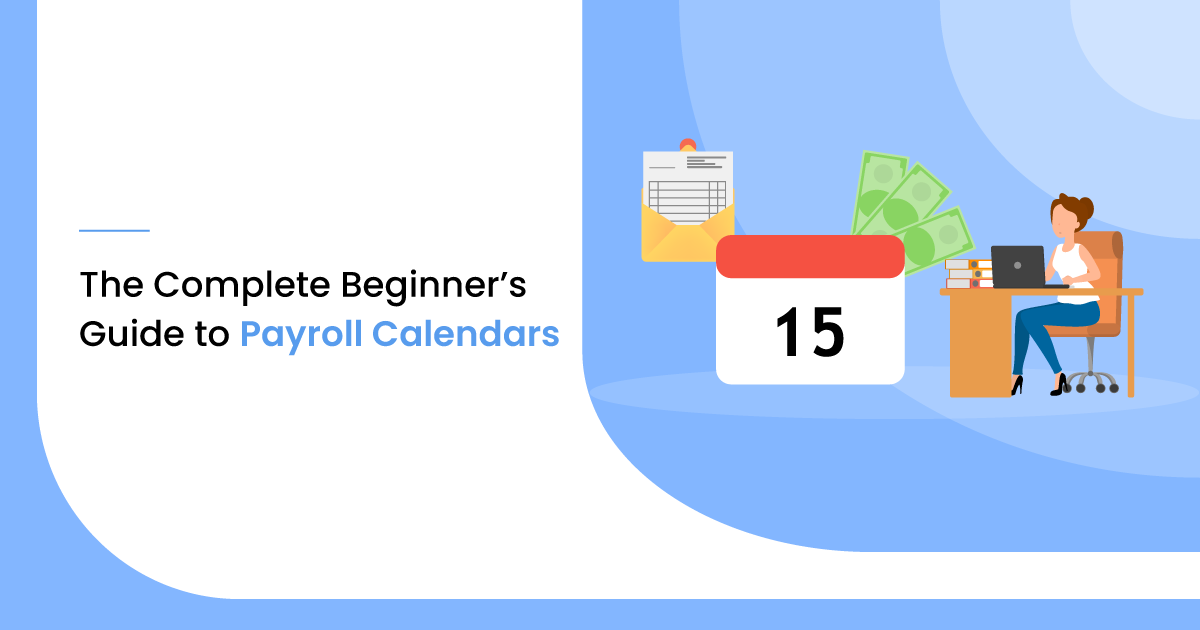54% of employers state that there is room for improvement in their current payroll policies and practices.
Let us take the example of two employers, A and B.
Employer A runs payroll at the same time and follows a strict schedule. However, employer B tends to forget holidays and overtime work done by employees.
The result?
Employer A encounters zero hiccups and faces no complaints from employees. On the other hand, employer B faces several issues and is forced to expedite payroll.
Now, what makes their approaches different? Well, employer A uses a payroll calendar, and employer B does not!
What is a Payroll Calendar?
A payroll calendar is a resource that outlines the start and end dates of pay periods as well as payment dates. Employers use payroll calendars to determine when they need to collect employee timesheets and run payroll.

Source- The Motley Fool
Payroll calendars are based on pay frequency, banking holidays, and direct deposit processing times. So your payroll calendar will slightly differ from the calendars someone else is using.
Benefits of Using a Payroll Calendar
Most of the organizations follow four types of payroll, these include
- Weekly: Once per week
- Biweekly: Once every other week
- Semimonthly: Twice every month
- Monthly: Once per month
1. Employee Scheduling
A major advantage of using a payroll calendar is that you can easily set your employee schedules.
It has been observed that companies using bi-weekly or weekly payroll use a consistent work schedule each week for payroll employees.
They further tabulate the work hours, verify the data and print payroll checks on the same weekday each time without fail.
2. System Resources
Companies use desktops and computer systems for several tasks throughout the business. Each department needs to use them to complete and record its work.
Having a payroll calendar in place will allow you to plan the days which the system resources must be available for payroll processing. Moreover, it will allow other departments to use additional resources on other days.
3. Employee Relations
Many employees plan their budget and other activities based on the idea of receiving their paycheck on a specific day of the week. The consistency achieved by a payroll calendar allows them to rely on this income without the need to think about it.
6 Steps to Create and Stick to Your Payroll Calendar

Source- ce1013
You can use payroll software or do payroll by hand. However, sticking to a payroll calendar is a must. Follow these steps to get started.
1. Choose A Frequency
The first step is to choose your pay frequency. This is important to determine your pay period start and end dates. Once you have done that, you can set up your pay period. Typically, a pay period starts a day after the payday.
While it is easy to set up a frequency, you need to take care of the federal laws governing it. All you need to do is maintain a consistent frequency. The frequency requirements vary from state to state.
Depending on your state, you will be limited to which frequencies you can use. So, before setting up your calendar, pay due to attention to pay frequency requirements.
2. Monitor Holidays
Imagine a scenario where you have made a great payroll calendar. However, you forgot to account for a banking holiday, and your entire planning goes for a toss.
So, when it comes to creating and setting up a payroll calendar, it is very important to note all holidays. Now, what will happen if payday falls on a bank holiday?
If such a scenario happens, employees may not receive their wages on time.
Thus, to avoid delays in payments, you need to adjust your payroll calendar accordingly. You can collect timesheets and run payroll one business day earlier to ensure your employees receive their wages on time.
Also Read: 6 Free Payroll Tax Calculator for Employers in 2020
3. Get Your Dates In Order
Now that you have decided on your pay frequency and taken holidays into account, you need to set deadlines for payroll processes. You need to develop a schedule to-
- Collect timesheets
- Run payroll
- Pay employees
4. Let Employees Know
The next step is to stick to your pay period calendar and let your employees know about it. Notify them about when they need to submit timesheets so you can payroll. Also, let your employees know when they can expect their wages.
If in case, there are banking holidays that will affect your payment cycle, inform your employees that their salaries will be delayed.
Another idea is to give your employees a payroll calendar at the beginning of the year so that they are informed at all times.
5. Set Reminders
While it is excellent to make schedules, fulfilling them without post-it notes and cell phone reminders becomes difficult. More than likely, we can forget to call back people and cross tasks off our to-do lists.
Set reminders if you want to stick to your payroll calendar. Having a recurring alarm in your phone will alert you when it is time to collect timesheets and run payroll.
Do whatever works for you when it comes to settling up reminders and simplifying your processes.
6. Use Software
Last but not least, using payroll software can help you stick to your payroll calendar. The software makes it easy to get into a routine and stick to it.
Furthermore, it will help you streamline the process and save you precious time. If there is a bank holiday, your payroll software will send you notifications reminding you that you need to adjust your payroll.
Payroll calendars can help you eliminate all your payment delays and help you establish a good rapport with your in-house and remote employees.
Have you tried out payroll calendars as yet? Share your experience in the comments below.
Need Any Technology Assistance? Call Pursho @ 0731-6725516







